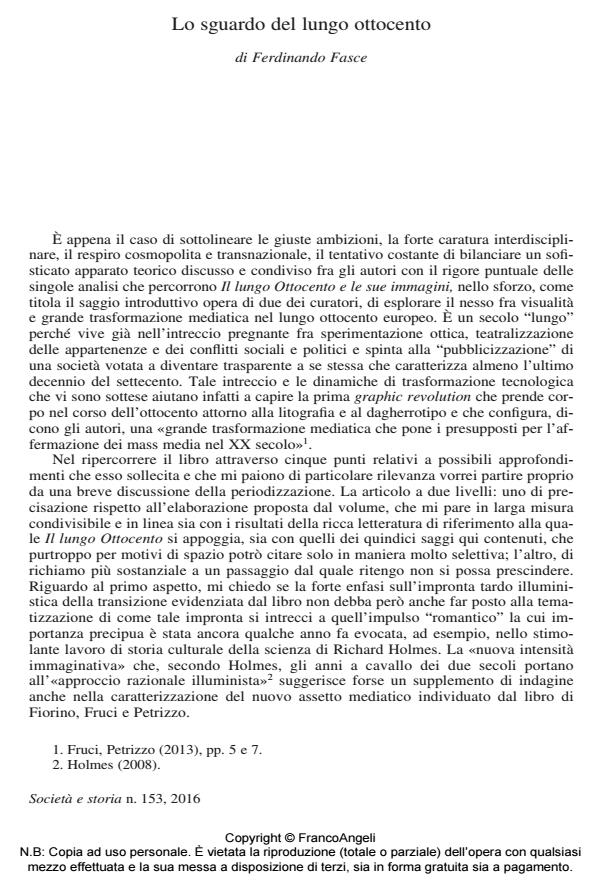The long visual Nineteenth century
Journal title SOCIETÀ E STORIA
Author/s Ferdinando Fasce
Publishing Year 2016 Issue 2016/153
Language Italian Pages 5 P. 533-537 File size 581 KB
DOI 10.3280/SS2016-153006
DOI is like a bar code for intellectual property: to have more infomation
click here
Below, you can see the article first page
If you want to buy this article in PDF format, you can do it, following the instructions to buy download credits

FrancoAngeli is member of Publishers International Linking Association, Inc (PILA), a not-for-profit association which run the CrossRef service enabling links to and from online scholarly content.
The article firstly points to the turn of the century as a major turning point ushering in a new visual regime. Secondly, it tackles the redefinition of the self accompanying that regime. Thirdly it explores the dialectic between private and public underlying the "long visual Nineteenth century".
Keywords: Visual regime, Belle Epoque, Self, Celebrity, Public and private
Ferdinando Fasce, Lo sguardo del lungo ottocento in "SOCIETÀ E STORIA " 153/2016, pp 533-537, DOI: 10.3280/SS2016-153006